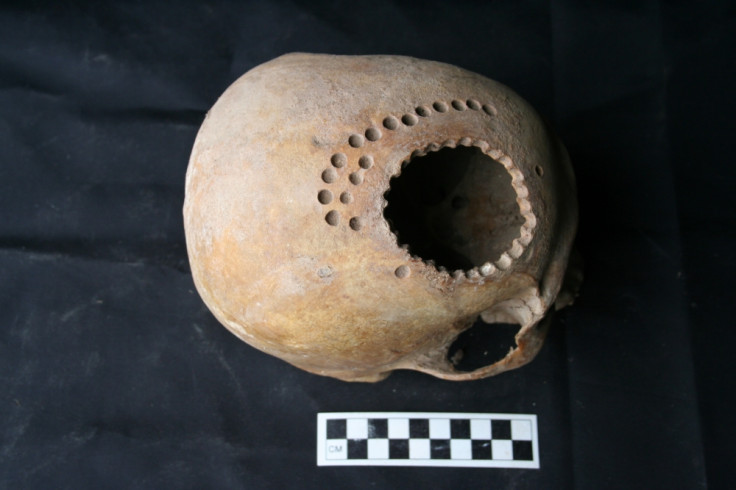Peru's Ancient Wari Healers Performed Brain Surgery by Scraping off Skull
Peruvians experimented with cranial surgery 1,000 years ago

Healers in the ancient Wari empire began experimenting with brain surgery around 1,000 years ago, researchers have said.
Bioarchaeologist Danielle Kurin, from the University of California Santa Barbara, said she has found evidence that people living in the south-central Andean highlands performed neurosurgery and had a variety of methods for removing the cranium.
Without antiseptic, anaesthetic, specialised surgical instruments or pain medication, healers would remove the skull and perform operations on the sick – known as trepanation.
Kurin and her team found the remains of 32 individuals dating to the Late Intermediate Period (AD 1000-1250) in burial caves in the province of Andahuaylas in Peru.
Among the remains, they found evidence of 45 separate trepanation procedures. She said cutting practices and techniques were being tested during this time, with some using scraping or cutting methods and others using hand drills.
"It looks like they were trying different techniques, the same way we might try new medical procedures today," she said. "They're experimenting with different ways of cutting into the skull."
Published in the American Journal of Physical Anthropology, Kurin said trepanations first appeared between AD 200-600, but the technique was not practiced globally.
"For about 400 years, from 600 to 1000 AD, the area where I work — the Andahuaylas — was living as a prosperous province within an enigmatic empire known as the Wari," she said. "For reasons still unknown, the empire suddenly collapsed.

"But it is precisely during times of collapse that we see people's resilience and moxie coming to the fore. In the same way that new types of bullet wounds from the Civil War resulted in the development of better glass eyes, the same way IED's are propelling research in prosthetics in the military today, so, too, did these people in Peru employ trepanation to cope with new challenges like violence, disease and depravation 1,000 years ago.
"These ancient people can't speak to us directly, but they do give us information that allows us to reconstruct some aspect of their lives and their deaths and even what happened after they died. Importantly, we shouldn't look at a state of collapse as the beginning of a 'dark age,' but rather view it as an era that breeds resilience and foments stunning innovation within the population."
Kurin said that while some inevitably died while having brain surgery, there is evidence that a number of patients recovered. Survivors may well have lived for many years with a gaping hole in their heads, however, because skull bones can take many years to regrow.
Evidence shows that healers practiced on recently dead bodies, with one example showing each hole being drilled deeper: "You can imagine a guy in his prehistoric Peruvian medical school practicing with his hand drill to know how many times he needs to turn it to nimbly and accurately penetrate the thickness of a skull."
Kurin also said that while the practice may seem like torture, it should not be seen as so: "We can see where the trepanations are. We can see that they're shaving the hair. We see the black smudge of an herbal remedy they put over the wound. To me, those are signs that the intention was to save the life of the sick or injured individual."
© Copyright IBTimes 2025. All rights reserved.






















